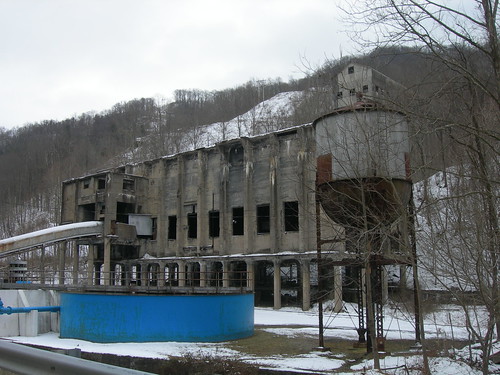Coal severance has been in the news quite a bit lately, raising questions about how it’s being used and who is benefiting. Earlier this month, it was revealed that Kentucky would be using $2.5 million in coal severance dollars to fund the renovation of the University of Kentucky’s Rupp Arena,  despite the fact that Lexington produces no coal nor is it even in Appalachia. A public outcry led one coalfield senator who supported the expenditure to issue an op-ed explaining his decision, stating that a reworking of how the severance tax is allocated means that more money overall is going back to coalfield counties, so the $2.5 million was a “surplus.” (How there can be a “surplus” of funds when so many coalfield counties are just barely scraping by is a good question.)
despite the fact that Lexington produces no coal nor is it even in Appalachia. A public outcry led one coalfield senator who supported the expenditure to issue an op-ed explaining his decision, stating that a reworking of how the severance tax is allocated means that more money overall is going back to coalfield counties, so the $2.5 million was a “surplus.” (How there can be a “surplus” of funds when so many coalfield counties are just barely scraping by is a good question.)
The whole incident spurred some great commentary about who gets coal severance taxes and how they’re spent. “Has Eastern Kentucky had enough yet?” asked an editorial in the Hazard Herald, decrying the “outright theft” of badly-needed funds. The Lexington Herald-Leader called out some other questionable expenditures of severance tax funds – including Little League and football teams, as well as day-to-day county budget expenditures for which severance funds are supposed to be off-limits – and asked a bigger question: “Why is the potential for an economic reboot being squandered? And what would it take to spark reform?”
Folks in West Virginia have been exploring the idea of creating a “future fund” for the coal severance tax, which would raise the tax slightly and set aside a portion into a trust fund for future economic development. (It’s an idea that’s being proposed in Kentucky as well.) A recent poll found that “Sixty-nine percent of those polled support a 1 percent increase in coal taxes, while 19 percent opposed such a move. Seventy percent support setting aside a portion of natural gas taxes for the program, while 12 percent were opposed.” That’s a pretty significant level of support; it seems that more and more people are recognizing the need to diversify the economy and the importance of having the funds to do so.
But will legislators listen? We’ve often said here that lack of leadership is one of the key problems facing the region. The Herald-Leader says that “politicians would have to trade control for accountability, transparency and decision-making based on sound economics,” and that’s not something that happens easily in politics, in the coalfields or anywhere else. It is hard to say no to politically-popular things like kids’ sports teams or senior citizen centers, even if those projects are doing little for long-term economic diversification. Giving citizens more say in how the money gets spent makes it harder for backroom political favors. For a severance tax permanent fund to be better protected from political whims and pet projects, a planning and advisory body will be necessary. Strategic planning for economic development at a regional level is sorely lacking in the region, and limits the positive effects that severance-funded projects could have. Mechanisms must be in place for democratic public input and accountability, otherwise what is there to keep permanent fund money from being spent the same way it is already?
Perhaps the Rupp Arena expenditure will be a catalyst for a public push for smarter use of dwindling severance tax dollars. The Hazard Herald certainly hopes so: “If ever there was a moment that could serve to unite the region in pursuit of reform in economic development efforts, or the lack thereof, this is it. Will mountain residents seize this opportunity to at long last demand fair treatment? Or will they be content to accept more of the same?”
Photo of abandoned coal tipple by jimmywayne via Flickr, used under Creative Commons license.





